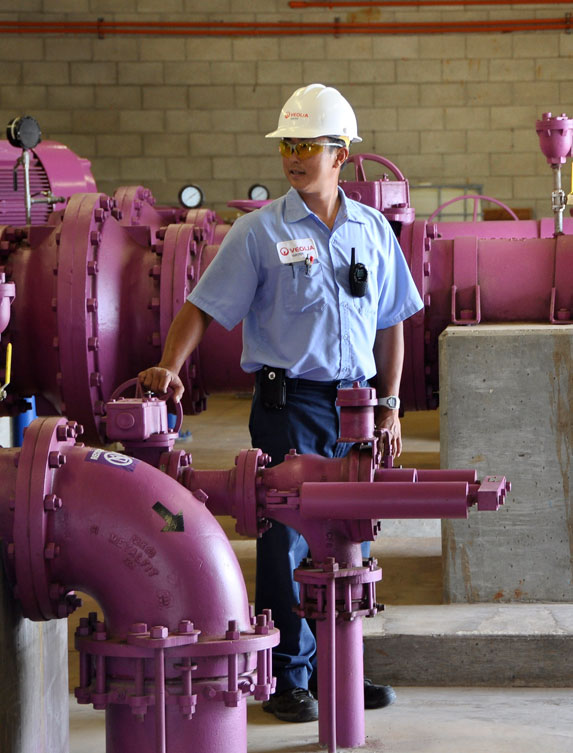Water scarcity issues in large sections of the U.S., especially California and most of the American Southwest, have become all too commonplace in recent years. Extended droughts and warming temperatures have continued to diminish precious sources of water for millions of Americans.
And there doesn’t seem to be relief in sight — at least not this year — as experts predict the region will face unprecedented water restrictions once the summer months arrive. Many parts of California are already experiencing significant drought, covering a much broader area than the same time last year.
Water scarcity challenges
Outside California, large sections of Nevada, Arizona and Mexico are also faced with unprecedented water scarcity issues due to the receding waters of the Colorado River. The river feeds Lake Mead and the Glen Canyon reservoir on the Arizona-Utah border, both prime sources of water for urban centers like Las Vegas, Tucson and Phoenix.
The prospect of a drying Lake Mead in Nevada could seriously jeopardize water supplies for these heavily populated areas.
The widespread drought is due to many factors, including overuse for farming and irrigation, as well as a diminishing snowpack in the Rocky Mountains, which serve as the source of the river as it winds its way to Mexico. These make for ominous signs that the water infrastructure that has supported this vast, dry region for decades is in serious danger of no longer being tenable.
What can be done?
With significant water scarcity issues facing communities across the U.S., local governments have refocused efforts on conservation and efficiency programs focused on reuse and reclamation.
As wastewater is the only water resource of which volume increases proportionally to economic development and consumption, many municipal water authorities are turning toward reuse and reclamation solutions to optimize their water costs and minimize environmental impact.
Hawaii offers an example of how states and municipalities can find innovative solutions to help ease the impact of water shortages, both short- and long-term.
In 2003, the Honolulu Board of Water Supply, which oversees water management for the heavily populated capital city, invested in a unique water reclamation facility that collects treated wastewater and converts it into reuse water that can be used for irrigation or industrial purposes.
The plant, which has the capacity to treat up to 2 million gallons of wastewater per day, is an example of how innovations can reduce the demand on water supplies. The treated wastewater that is captured and used to irrigate golf courses or help manage industrial boilers would otherwise have been discarded in the ocean.
Water reuse programs make the most of treated wastewater for a variety of beneficial purposes, including:
- Facility cooling
- Boiler feed water
- Industrial process water
- Watering green spaces and golf courses
- Groundwater storage and recovery and salt intrusion barriers in coastal communities
- Agricultural irrigation
- Public fountains
- Street cleaning
For drought-ridden regions like the Southwest, reuse and reclamation can significantly reduce the amount of drinking water that is used for non-potable purposes, extending the life of existing resources.
Beyond water reuse and reclamation
Solutions like reuse and reclamation are not expected to be enough to stop the trend toward increased water scarcity. Conservation efforts on the part of water users will be critical, as will advances in technology that will make it more efficient to make the most of existing resources, such as energy efficient desalination and rain harvesting.
On May 11, California Gov. Gavin Newsom unveiled a $5.1 billion drought response package aimed to provide relief for 41 counties that are operating under state of emergency due to drought — 30 percent of the state population.
The relief package calls for significant investments in a variety of water scarcity solutions, both for the short- and long-term. The Governor’s plan calls for investments in:
- Opportunities for land repurposing to help farmers and other land-users find alternative uses that are less water-intensive
- Restoration of wetlands, which are natural sources of clean water
- Improvements to water conveyance systems
- Long-needed upgrades to water and wastewater treatment infrastructure
Other parts of the Southwest have found success with innovative solutions such as improved groundwater and stormwater harvesting. In El Paso, water scarcity challenges have been eased with the energy-efficient desalination of brackish water — water that has more salinity than freshwater, but not as much as seawater.
Still, these promising methods for expanding the supply of freshwater in the face of steady drought do not mean California and the American Southwest can continue to consume water at the pace of today. The only feasible solution for long-term water issues is to reduce demand and provide more supply through advanced technologies and solutions including water reuse and reclamation and desalination.



